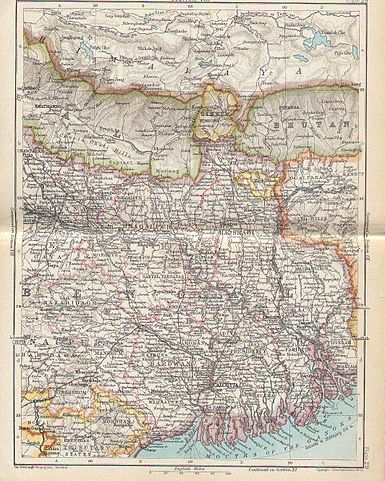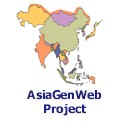Bangladesh
Bangladesh
We are always ready welcome volunteers for the exciting WorldGenWeb project. One of the openings is as a Country Coordinator for this country. If you have an interest in helping us develope this valuable resource by volunteering to serve as the Country Coordinator, please contact the Regional Coordinator.

Welcome to the BangladeshGenWeb Project homepage. This site is part of the WorldGenWeb Project and is the local resource page for research in Bangladesh.
If you need assistance with this website, please contact me. Please do not send me your queries.
The BangladeshGenWeb Project is in need of volunteers to host query boards, provide look-up resources, transcribe data, help with archival research and more. If you might be interested in volunteering please contact me.
General information about Bangladesh
Remnants of civilization in the greater Bengal region date back four thousand years,when the region was settled by Dravidian, Tibeto-Burman, and Austro-Asiatic peoples. The exact origin of the word "Bangla" or "Bengal" is unknown, though it is believed to be derived from Bang, the Dravidian-speaking tribe that settled in the area around the year 1000 BCE.
After the arrival of Indo-Aryans, the kingdom of Gangaridai was formed from at least the seventh century BCE, which later united with Bihar under the Magadha and Maurya Empires. Bengal was later part of the Gupta Empire from the third to the sixth centuries CE. Following its collapse, a dynamic Bengali named Shashanka founded an impressive yet short-lived kingdom. After a period of anarchy, the Buddhist Pala dynasty ruled the region for four hundred years, followed by a shorter reign of the Hindu Sena dynasty. Islam was introduced to Bengal in the twelfth century by Sufi missionaries, and subsequent Muslim conquests helped spread Islam throughout the region. Bakhtiar Khilji, a Turkish general, defeated Lakshman Sen of the Sena dynasty and conquered large parts of Bengal. The region was ruled by dynasties of Sultans and feudal lords for the next few hundred years. By the sixteenth century, the Mughal Empire controlled Bengal, and Dhaka became an important provincial center of Mughal administration.
European traders arrived late in the fifteenth century, and their influence grew until the British East India Company gained control of Bengal following the Battle of Plassey in 1757. The bloody rebellion of 1857, known as the Sepoy Mutiny, resulted in transfer of authority to the crown, with a British viceroy running the administration. During colonial rule, famine racked the Indian subcontinent many times, including the Great Bengal famine of 1943 that claimed 3 million lives.
Between 1905 and 1911, an abortive attempt was made to divide the province of Bengal into two zones, with Dhaka being the capital of the eastern zone. When India was partitioned in 1947, Bengal was partitioned along religious lines, with the western part going to India and the eastern part joining Pakistan as a province called East Bengal (later renamed East Pakistan), with its capital at Dhaka. It achieved indepence in 1971. Source: Wikipedia
Resources
Links
There are no articles in this category. If subcategories display on this page, they may have articles.




